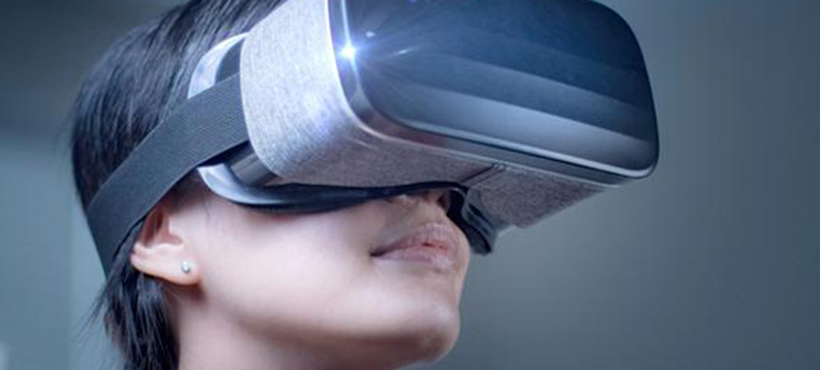

Due to the size of its baggage handling and industrial conveyor equipment, Jervis B. Webb (Daifuku) found it difficult to showcase its products effectively at tradeshows. The company asked Mohawk to create a simple and portable VR experience to help demonstrate its equipment to potential buyers.

Funder: Ontario Cenre for Innovation
Research Area: Creative and Digital Solutions
Research Team: Marilyn Powers, Nika Clail, Ben Jackson, Dylan Dvorak and Joshua Travis
Future Ready Challenge
Attendance at a tradeshow is an important business development strategy for many industries. Tradeshows offer opportunities to introduce new products, meet new partners, and convert leads into sales. But they are often labour, and cost-intensive. Companies must prepare staff, displays and exhibits, flooring and furniture, promotions, and giveaways, and then pay for registration, travel and shipping, and show services like electricity and cleaning. That can easily add up to hundreds of hours of extra work and costs over $100,000.
While tradeshows are important, some products are simply too large and complex to lend themselves well to the trade show format. It’s one thing to demonstrate the upgraded functions and forms of the latest phone, or power tool, or even car, but how do you demonstrate something like an airport baggage handling system? Already a popular tool for online selling, Virtual Reality and Augmented Reality, often referred to as XR, are increasingly being used to optimize the tradeshow experience.
R & D Collaboration
Jervis B. Webb (Daifuku) is a leading manufacturer of material handling equipment, such as conveyors, automated vehicles and assembly-line systems. Its products are used extensively in automotive assembly plants throughout North America and at Toronto’s Pearson airport.
The sales team wanted to find an innovative way to showcase its products in a way that would overcome the limitations of traditional trade show booths and not require expensive VR headsets. The company asked the research team at the EON / Mohawk XR Development Centre to create a virtual tour that would be compatible with Google Cardboard.
Innovative Results
Jervis B. Webb had recently worked with the Mohawk team to build a VR tour that allowed users with a VR headset to interact with conveyor machines. The next step was to tailor this experience to provide potential clients at tradeshows a virtual reality experience without the need for a headset.
The initial VR tour used CAD (Computer-Aided Design) drawings and photographs to create 3D objects from scratch. The research team had modeled objects and added textures using Autodesk 3DS Max, before using Unity to develop the full immersive functionality of the experience.
The research team customized the initial VR tour for web and mobile devices, creating a simpler version as an Android-based mobile app. The app is compatible with Google Cardboard, a simple and inexpensive VR viewer for smartphones.
Jervis B. Webb can now use this solution for prospective clients. The company now distributes Google Cardboard at tradeshows and sale pitches, which allows potential clients to revisit the VR experience at their convenience. More than just a sales tool though, the Android-based VR tour is now used to onboard new employees- a use case the company hadn’t originally considered.
David Summers, Manufacturing Engineer with Jervis B. Webb, says “ Mohawk helped us turn the seed of an idea into a multifunctional reality that we’re continuing to develop and learn from.”

